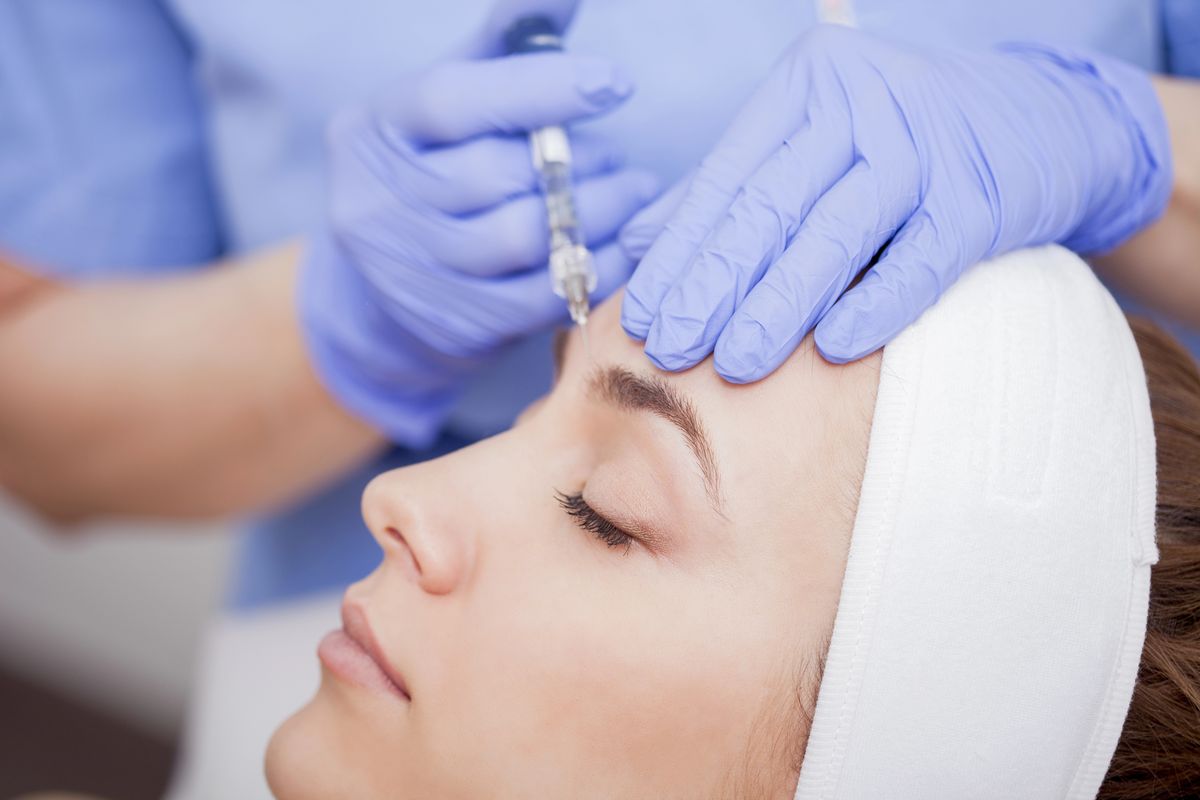Botox, scientifically known as botulinum toxin type A, has become one of the most popular tools in aesthetic and therapeutic medicine. Its unique properties allow it to temporarily block the nerve signals that are responsible for muscle contraction. In practice, this means that when Botox is administered, the muscles that usually lead to facial wrinkles are relaxed, resulting in smoother skin and less visible wrinkles.
The action of Botox is based on a process in which botulinum toxin binds to nerve endings, blocking the release of acetylcholine, a neurotransmitter that signals muscles to contract. The effect is temporary and usually lasts between three and six months, after which the muscles gradually regain their ability to contract, which may require another application.
Botox in aesthetic medicine:
Botox, or botulinum toxin type A, is a well-known player in the aesthetic medicine arena, offering more than just a fight against the passing of time. Its use in the reduction of facial wrinkles is well-documented, but Botox harbours many more possibilities, becoming a key tool in the quest to improve patients' wellbeing and quality of life.
Botox works by precisely targeting muscles, leading to their temporary relaxation. This mechanism has found its use not only in smoothing facial lines on the forehead or around the eyes, but also in the aesthetic correction of gummy smiles. For many, the excessive visibility of the gums when smiling has been a source of insecurity, and Botox, thanks to its ability to control muscle activity, allows a subtle lowering of the upper lip, providing a more balanced smile.
Beyond aesthetics, Botox has found its way into the treatment of excessive sweating, or hyperhidrosis, which can be a significant discomfort in everyday life. By blocking the nerve signals that stimulate the sweat glands, botox provides relief for those who have struggled with this problem on various areas of the body, including the armpits, hands or feet.
There are also significant benefits of Botox in improving facial contour, especially for those struggling with bruxism - the unconscious grinding of teeth that not only leads to enamel damage, but can also cause headaches and temporomandibular joint problems. Botox, applied to the masseter muscles, can reduce the tension and frequency of grinding, providing relief and preventing further damage.
The approach to Botox therapy requires an individual assessment by an experienced professional who will not only advise on the best application of the substance depending on the patient's needs and expectations, but also discuss potential side effects and provide appropriate precautions. Choosing a Botox treatment is a decision that can bring significant aesthetic and therapeutic benefits, provided it is carried out with due care and professionalism.
Therapeutic use of botox
Botox, while most commonly associated with aesthetics, is also an important tool in the treatment arsenal of many medical conditions. Its ability to block nerve signals that lead to excessive muscle activity has been successfully adapted to treat a range of medical problems, giving patients hope of relief and improved quality of life.
Chronic migraines, affecting a significant proportion of the population, can be particularly persistent and difficult to treat. Botox, used as part of migraine therapy, works by relaxing the muscles in the head and neck, which can reduce the frequency and intensity of pain attacks. For many patients whose daily lives have previously been significantly limited by migraines, Botox has opened up new possibilities for managing their condition.
Muscle spasticity, often occurring after strokes, in multiple sclerosis or other neurological conditions, can significantly affect patients' mobility and comfort. Botox, applied directly to the muscles affected by spasticity, allows them to temporarily relax. This, in turn, facilitates physiotherapy, increases the range of movement and contributes to a reduction in pain and improved function in daily life.
Uncontrolled muscle spasms, such as blepharospasm (involuntary blinking) or torticollis neck spasm, can not only be disruptive but also impair social functioning. Botox, with its ability to selectively block muscle activity, offers an effective solution, allowing patients to return to their normal lives.
Additionally, Botox has found use in the treatment of excessive tearing, incontinence and other conditions where excessive muscle or nerve activity is the primary problem. Thanks to its precise application, the therapeutic effects of botox can be directed only at the problem areas, minimising the risk of adverse reactions in other parts of the body.
Choice of specialist
Choosing a specialist to carry out Botox treatments requires attention to their experience, qualifications and positive feedback from previous patients. It is also important to be open to an initial consultation, to be transparent about procedures and costs, and to build a comfortable relationship with the patient. Communication and a sense of security should be at the forefront to ensure satisfactory treatment results.

